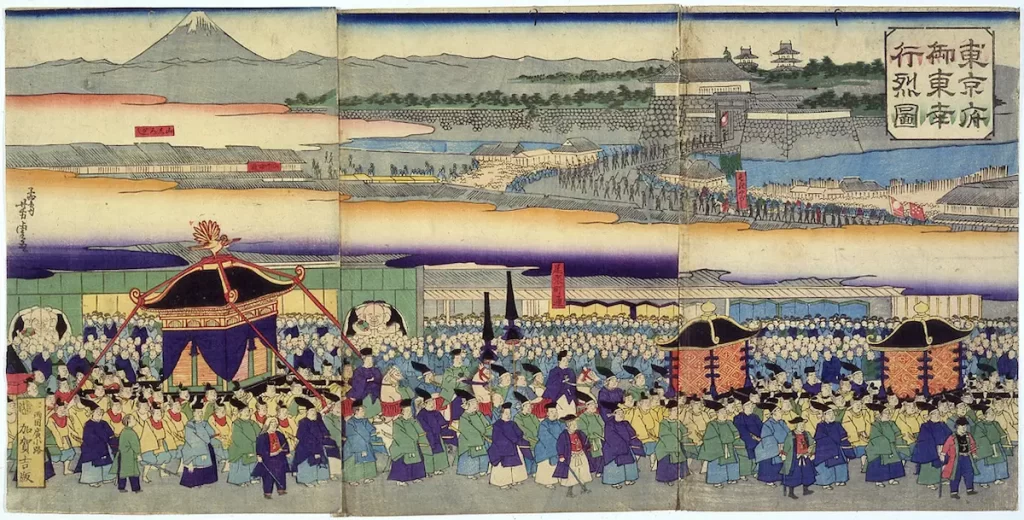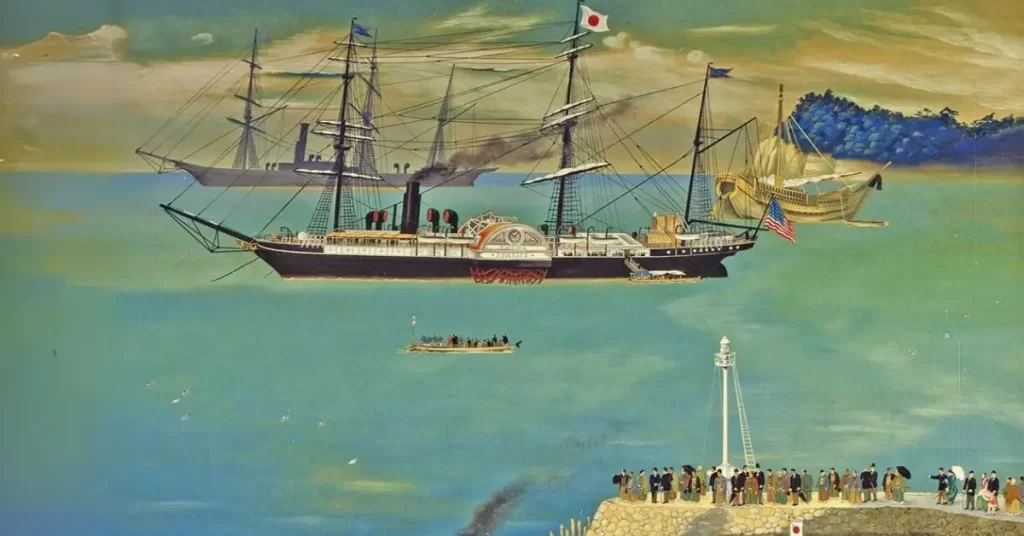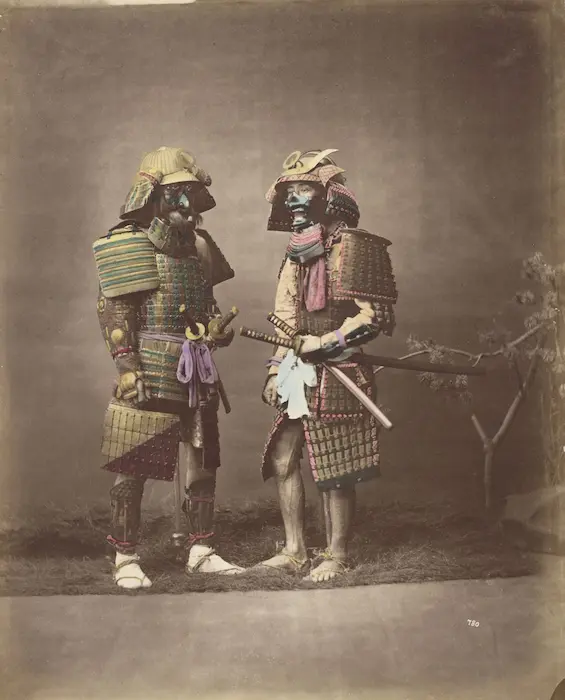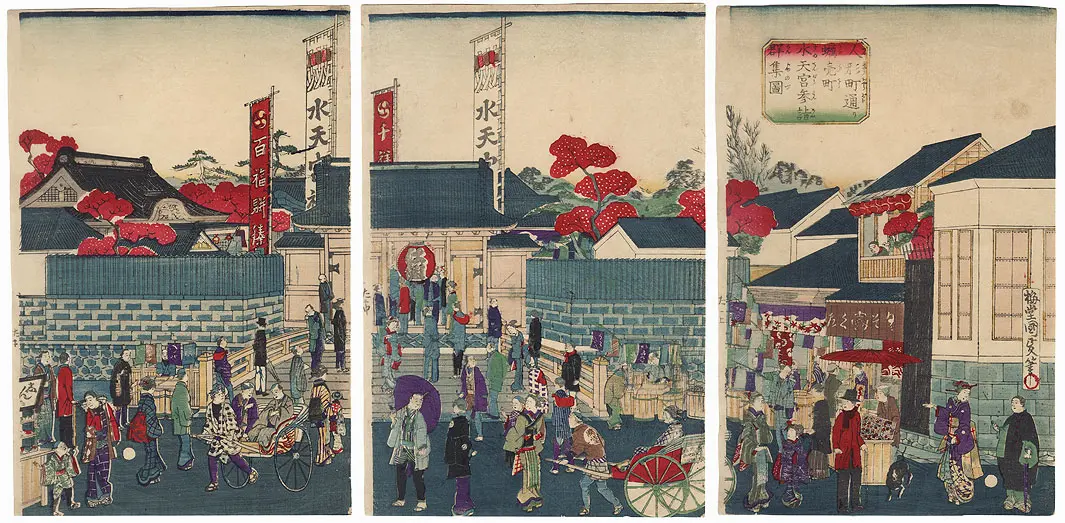In the Meiji Period (1868-1912), Japan transformed from a secluded, feudal society into an industrialized nation.
The decline of the Edo Period’s Tokugawa shogunate and the resurgence of imperial power under Emperor Meiji marked the dawn of this era. Through determined reforms and adoption of Western practices, Japan redefined its societal structure, military, and culture.
This period also saw the end of the samurai class.
Key Takeaways
- The Meiji Period was a pivotal era where Japan transitioned from feudalism to modern statehood.
- Westernization was aggressively pursued, inspired by the insights from the Iwakura Mission. The government, military, education, and industry underwent comprehensive reforms.
- The Meiji Restoration set Japan on a path to becoming a major global power. Respect for Japan’s past blended with a vision for a progressive future.
- The samurai class was abolished, with the Satsuma Rebellion highlighting their resistance to losing their status.
- The ethos and values of the samurai continue to influence Japanese culture and society.
Overview of the Meiji Period (1868–1912)
The Meiji Period in Japan marked a dramatic shift from the Edo Period’s isolationist policies.
For over 250 years, the Tokugawa shogunate maintained a closed-off, rigid society under the sakoku policy. This changed with Commodore Matthew C. Perry’s arrival in 1853. He forced Japan to open its ports and exposed its inability to deal with foreign powers.
The shogunate’s downfall paved the way for the Meiji Restoration in 1868, where Emperor Meiji restored imperial rule. A period of rapid modernization and systemic changes began. Japan was turning into a major global power.

Meiji Period Society and Culture
The Meiji Period in Japan was a time of intense societal and cultural transformation. It introduced a more flexible and modern social hierarchy.
The Charter Oath, issued by the Meiji government, played a key role in shaping this new societal vision. It emphasized inclusivity and progress, signaling a departure from the feudal past. Traditional privileges enjoyed by the Feudal lords (daimyo) and the samurai class ended.
The government wanted to create a fairer society that aligned with Western approaches.
Westernization of Japan
The Westernization of Japan during the Meiji Period was a strategic and comprehensive process.
Meiji leaders were aware of the progress made by Western nations. They began reforms that fundamentally changed Japan’s military, economy, government, and education systems.
Key to this transformation was the Iwakura Mission. Japanese scholars and politicians visited the United States and Europe to gain an understanding of Western governance and culture.
Their insights helped Japan avoid colonization and instead emerge as a global competitor.

Abolition of the Samurai Class
The abolition of the samurai class during the Meiji Period marked a profound and symbolic end to a historical era.
In the Edo Period, samurai were the dominant military elite. The Meiji-era reforms made their role obsolete. The creation of a conscripted army broke the samurai’s exclusive hold on military power. These shifts led to dissatisfaction among the samurai, resulting in several rebellions.
The most notable was the Satsuma Rebellion, led by Saigo Takamori. It highlighted the struggle between traditional values and modernization.
The rebellions climaxed at the Battle of Shiroyama, where the samurai class made their final, defiant stand. The battle symbolized the end of an age in Japanese history.

The Samurai Legacy
The samurai’s influence on Japan has been profound and long-lasting.
After they fell from power, the essence of what samurai represented seeped into the fabric of Japanese society. Their values and philosophy impacted areas like business and education.
The romanticized image of the samurai, with their unwavering commitment to their code of conduct, resonates through Japanese culture. They are celebrated in literature, film, and art, their stories told and retold.
This fascination underscores the deep respect for the samurai’s role in shaping Japanese identity.
Frequently Asked Questions
Why did the Meiji Restoration happen?
The Meiji Restoration occurred due to discontent with the Tokugawa shogunate. Foreign threats and a push for imperial power fueled the desire to modernize Japan.
What were the significant events that occurred during the Meiji period?
Key events in the Meiji period include the restoration of imperial rule, the end of feudalism, and the Satsuma Rebellion. Other major developments were industrialization and the Westernization of government and military systems.
What was the significance of the Meiji Restoration?
The Meiji Restoration’s importance lies in overhauling Japan’s political, social, and economic systems. It transformed Japan into an industrial power capable of competing globally.
How did the Meiji period contribute to the modernization and industrialization of Japan?
The Meiji period saw Japan adopt Western technologies and create a modern educational system. These changes, along with infrastructure development, propelled Japan into industrialization.
Why did Japan no longer feel threatened to be colonized by the early Meiji period?
By the early Meiji period, Japan had built a formidable military and Western-style institutions. This progress earned the respect of Western powers and secured Japan’s independence.
Who was the last samurai?
Saigo Takamori is often considered the last samurai who led the Satsuma Rebellion. The rebellion symbolized samurai resistance to the loss of their societal role.
Further Reading
- A Concise History of Japan by Brett L. Walker
- Japan: A Country Study by Library of Congress


